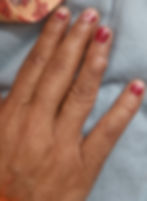Subcutaneous Cysts: Causes, types and treatment options
- DR Dinesh Vats
- Mar 12
- 3 min read
Updated: Jul 23
What Are Subcutaneous Cysts?
Subcutaneous cysts are small, closed pockets of tissue found beneath the skin. They are typically filled with fluid, pus, or other substances and can vary in size. While they can occur anywhere on the body, they are most commonly found on the face, neck, back, and trunk. The most common type of subcutaneous cyst is the epidermoid cyst, which develops from skin cells that become trapped in a hair follicle or pore.
Symptoms of Subcutaneous Cysts
Most subcutaneous cysts are harmless and asymptomatic. However, some symptoms may indicate that it’s time to seek medical attention, including:
Size Increase: If the cyst continues to grow or changes in appearance.
Pain or Tenderness: Sensitivity to touch or pain could suggest inflammation or infection.
Redness or Warmth: These signs might indicate that the cyst is infected.
Drainage: Pus or foul-smelling fluid draining from the cyst can signify an infection.
When to Seek Medical Help
While many subcutaneous cysts do not require treatment, it’s essential to consult a healthcare professional if you notice any troubling symptoms or if the cyst becomes bothersome. Additionally, if a cyst appears suddenly or changes rapidly, it’s vital to get it evaluated to rule out more serious conditions.
Methods for Cyst Removal
Observation: If the cyst is small and asymptomatic, a doctor may recommend simply monitoring it.
Injection: For inflamed cysts, a corticosteroid injection may help reduce inflammation and alleviate discomfort.
Incision and Drainage: This is often performed on infected cysts. The physician will make a small incision, drain the contents, and may also prescribe antibiotics to treat any infection.
Surgical Removal: For cysts that are large, recurrent, or bothersome, complete surgical excision may be the best option. This typically involves making a larger incision to remove the entire cyst wall to prevent recurrence. Surgical removal is usually performed under local anesthesia and can often be done on an outpatient basis.
Post-Removal Care
After removal, proper care is essential for healing:
Keep the Area Clean: Follow your doctor’s instructions for cleaning the wound.
Pain Management: Over-the-counter pain relievers can help if you experience any discomfort.
Watch for Infection: Keep an eye out for increased redness, swelling, or pus.
Follow Up: Attend any follow-up appointments as advised by your healthcare provider.
Conclusion
Subcutaneous cysts are often benign and can be managed effectively with proper care. If you’re considering treatment or simply have concerns about a cyst, consult a healthcare professional for advice tailored to your specific situation. Remember, while most cysts don’t pose a health risk, staying informed and proactive about your health is always beneficial.
Case Presentation
Case 1: A 48-year-old male presented with a complaint of a cystic swelling over his forehead for the past year, which has been progressively increasing in size. On examination, it seemed to be a subcutaneous cyst, and excision was planned as a minor Outpatient Department (OPD) procedure.
Sharing images.







Case 2.
A 56 Years female presented with a complaint of cystic swelling over her 4th finger distal end right hand for the past year, which has been progressively increasing in size. On examination, it seemed to be a subcutaneous cyst, and excision was planned as a minor Outpatient Department (OPD) procedure.
Sharing Images.




